Composting 101: What Can You Compost?
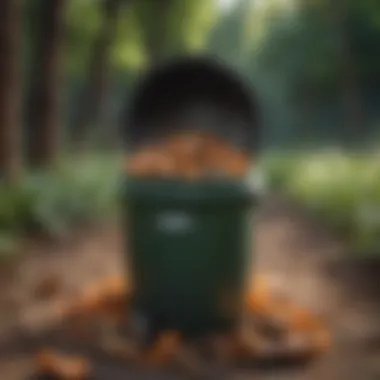
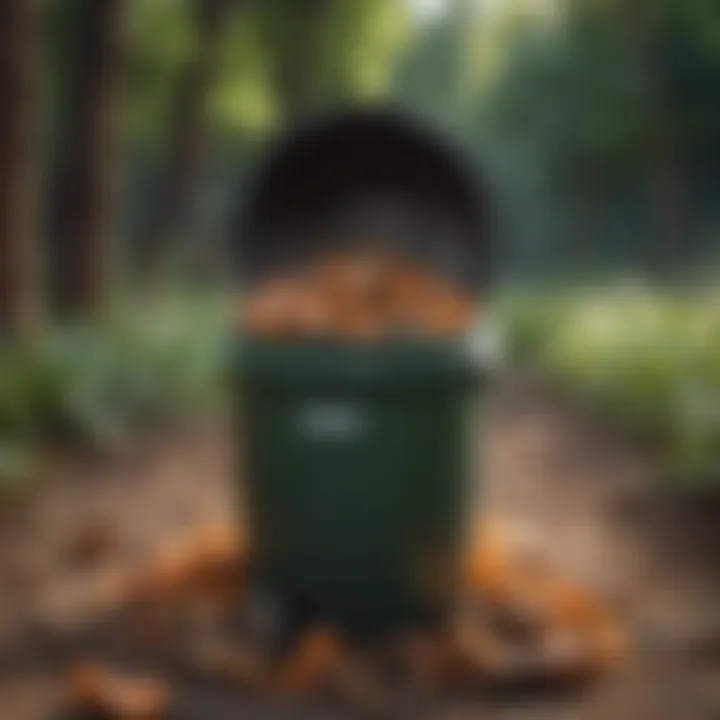
Intro
Composting has emerged as a vital practice in sustainable waste management. Understanding what can be composted allows individuals and communities to reduce their environmental footprint. Organic waste is not merely refuse; it can be transformed into a resource. This article aims to detail the various types of organic materials suitable for composting, while also delving into the processes involved in creating rich compost. Furthermore, this piece will highlight the benefits of composting, methods for setting up a system, and best practices to enhance the composting process.
Overview of the Topic
Composting is intimately connected to the concept of waste reduction. As the world grapples with the mounting issue of landfills and greenhouse gas emissions, composting presents a proactive solution. The transformation of organic waste into compost enriches soil, promotes plant health, and fosters a closed-loop system that benefits the environment.
The significance of composting cannot be overstated. With an estimated 30% of the waste stream being organic matter, this potential resource often ends up in landfills, contributing to methane emissions. Methane is a potent greenhouse gas, far more impactful than carbon dioxide. Therefore, promoting composting is essential for environmental stewardship.
Current Status and Challenges
Despite the advantages of composting, its adoption remains inconsistent. In urban areas, the infrastructure for composting is sometimes limited. Many residents lack access to composting facilities or knowledge of how to start their own. This results in a significant amount of compostable material being wasted. Moreover, misconceptions about what can be composted may further hinder participation.
Challenges also arise from various regulations and restrictions imposed by municipalities. These regulations often complicate the composting process, making it less appealing for individuals and businesses alike. Addressing these barriers is crucial to increasing composting rates.
Sustainable Solutions
There are numerous sustainable practices that can facilitate composting. Education plays a critical role in this process. By educating the public on what items can effectively be composted, communities can see an increase in participation rates.
Successful case studies, such as the program implemented in San Francisco, illustrate effective composting systems in action. The city mandates composting for all residents and businesses, resulting in a significant reduction in landfill waste. This initiative demonstrates that organized efforts can create a culture of composting and sustainability.
Impact and Importance
The impact of composting extends beyond waste reduction. Composting enriches soil, improving water retention and promoting biodiversity. This, in turn, leads to healthier ecosystems and vibrant communities. As the practice of composting grows, it fosters a shared responsibility for environmental conservation, encouraging individuals to contribute positively to their surroundings.
"Composting is not only about waste management; it is a step towards ecological balance and sustainability."
This exploration of what trash can be composted serves as a foundation for deeper understanding, preparing readers to engage with composting practices confidently.
Prelude to Composting
Composting involves the natural process of recycling organic material, such as food scraps and yard waste, into a valuable fertilizer known as compost. This process not only reduces the amount of waste sent to landfills but also enriches soil, supports plant growth, and contributes to a healthier environment. Recognizing what can be composted is essential for effective composting practices. Understanding the components of composting allows individuals to transform everyday waste into a sustainable resource. The significance of composting in our waste management system cannot be overstated. It offers a dual benefit: it lessens the burden on landfills while simultaneously providing nutrients essential for plant growth.
Defining Composting
Composting is a biological process that decomposes organic matter through the action of microorganisms, worms, and other decomposers. The resulting material is rich in nutrients and beneficial for soil health. It improves soil structure, promotes moisture retention, and encourages microbial activity. Compost can be created using a variety of materials, from kitchen scraps like vegetable peels to yard waste such as leaves and grass clippings. This process typically requires a balance of carbon-rich and nitrogen-rich materials to be successful. Without understanding these concepts, one might fail to achieve effective composting.
Importance of Composting
The importance of composting extends beyond individual gardens; it has significant environmental ramifications. By diverting organic waste from landfills, composting decreases methane emissions—a potent greenhouse gas produced when organic material decomposes anaerobically. Additionally, composting supports biodiversity by fostering a healthy ecosystem in the soil. Compost provides a habitat for beneficial microbes and organisms, contributing to the overall vitality of the environment.
Key benefits of composting include:
- Waste Reduction: Composting diverts organic waste from landfills.
- Soil Enrichment: It provides a natural source of nutrients for plants.
- Environmental Protection: Reduces greenhouse gas emissions and improves air quality.
- Cost Savings: Replacing chemical fertilizers with compost can reduce gardening expenses.
"Composting is a simple yet effective way to contribute to a sustainable future."
Understanding composting and its advantages is crucial for individuals who are conscious about their environmental footprint. By embracing composting, one joins a broader movement toward sustainability and responsible stewardship of resources.
Types of Compostable Waste
Understanding the types of compostable waste is essential for anyone interested in composting. Composting not only reduces organic waste in landfills but also enriches soil health. It promotes a sustainable lifestyle, making it imperative to be aware of what can be composted. In this section, we will delve into various categories of compostable waste, focusing specifically on kitchen waste, yard waste, paper products, and manure.
Kitchen Waste
Kitchen waste represents a substantial component of the compostable materials. It is readily available and often consists of perishable items that would otherwise contribute to landfill overflow.
Fruit and Vegetable Scraps
Fruit and vegetable scraps are a cornerstone in composting due to their high nitrogen content. These scraps break down quickly, which results in a rich, fertile compost. They are a popular choice because they are widely available and do not require much preparation before being added to the compost bin. One unique feature of fruit and vegetable scraps is their ability to attract beneficial microorganisms that aid in the decomposition process. However, care must be taken to avoid adding scraps that are moldy or rotten, as they can introduce harmful pests or pathogens.
Coffee Grounds and Filters
Coffee grounds and filters are rich in nitrogen, making them an excellent addition to compost. They help to improve soil structure and water retention, promoting a healthy garden. The granules of coffee grounds also serve as a beneficial texture in mixed compost. However, it is important to note that while coffee filters can be composted, they should not contain any synthetic materials. Quality is key when using coffee. If you notice any residual oil, it may not break down effectively.
Eggshells
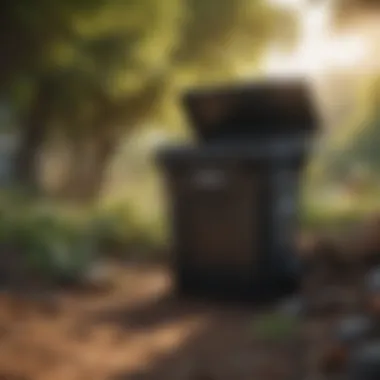

Eggshells are a remarkable source of calcium, which is beneficial for plants. Their hard texture helps aerate compost as they break down. Eggshells can be added directly to the compost pile, but crushing them first can accelerate their decomposition. While they are a beneficial compost material, monitor the ratio of eggshells to other waste. Too many eggshells can create an imbalance in the compost mix.
Yard Waste
Yard waste comprises organic materials that originate from outdoor activities. It is a crucial aspect of composting, offering substantial bulk and contributing necessary carbon to the compost mix.
Grass Clippings
Grass clippings are a readily available compostable material. They are high in nitrogen, which supports the breakdown process in composting. When using grass clippings, it's best to avoid large piles that can become compacted. A preferred method is to layer them with other materials to ensure aeration. However, be cautious with grass clippings treated with herbicides. They can negatively impact the compost.
Leaves
Leaves are particularly beneficial in compost as they provide essential structure. They contribute a high carbon content and can aid drainage, improving the overall compost texture. Nevertheless, it's advisable to shred leaves before adding them to the compost. Whole leaves take longer to break down. Also, autumn tends to provide an abundance of leaves, making them an easy resource to utilize.
Plant Trimmings
Plant trimmings from pruning can also be composted, providing vital green material. They add valuable nutrients to compost, encouraging microbial activity. When adding plant trimmings, ensure that they are disease-free and avoid including any invasive species. This is particularly important to maintain the health of your compost and garden.
Paper Products
Paper products, when used wisely, can be effective in composting. However, it is essential to choose the right types of paper products that will break down effectively.
Uncoated Paper
Uncoated paper is a good source of carbon and can help balance the nitrogen from kitchen waste. It breaks down well in compost. It is advisable to shred the paper to enhance decomposition. As a general rule, avoid glossy paper, as it may contain harmful chemicals that do not degrade safely.
Cardboard
Cardboard is another excellent compostable material that adds carbon and structure. It should be torn into smaller pieces to help it decompose more easily. Cardboard provides air pockets in compost, which helps to achieve better aeration. However, ensure that all tape, stickers, and labels are removed, as they may not be compostable.
Paper Towels
Paper towels are often used in kitchens and can be added to compost if they are free from food residues or cleaning chemicals. They contribute carbon and can help maintain moisture in the compost. A significant advantage of paper towels is their ability to soak up excess moisture, aiding in building a balanced compost structure. Care must be taken to avoid those used with chemicals or synthetic additives.
Manure
Manure, particularly from herbivores, is regarded as black gold in the composting world. It is a potent source of nitrogen and microbial activity.
Livestock Manure
Livestock manure, such as from cows or horses, is rich in nutrients and can enhance soil fertility significantly. It speeds up the decomposition process when added to other compost materials. However, it is critical to ensure it is well-aged or composted itself to eliminate pathogens. Fresh manure can be too high in nitrogen and may burn plants.
Organic Fertilizers
Organic fertilizers derived from plant sources can also contribute positively to compost. They provide essential nutrients and enhance microbial life. They can be mixed into compost in moderation and should come from a reliable source to avoid introducing contaminants. Their unique feature is that they break down into slow-release nutrients, which benefit plants over time.
Less Known Compostable Materials
Understanding less known compostable materials expands the horizons of what can be diverted from landfills. Composting is not limited to food scraps or yard waste. By including a broader range of organic materials in the composting process, we can enhance soil health and promote sustainability. These materials often go unnoticed but play an essential role in composting systems.
Biodegradable Plastics
Biodegradable plastics present a unique opportunity in the composting world. Unlike traditional plastics, which persist in the environment for centuries, biodegradable alternatives are designed to break down naturally.
However, not all biodegradable plastics are created equal. Some require industrial composting facilities to decompose fully, while others may break down in backyard compost systems under the right conditions. It is crucial to verify whether these products are certified compostable before introducing them into compost bins. The benefits include reducing landfill waste and decreasing reliance on petroleum-based products.
Natural Fabrics
Natural fabrics like cotton and linen add substantial value to compost. Not only do they decompose effectively, but they also contribute beneficial nutrients to the soil as they break down.
Cotton
Cotton is a highly regarded material in the context of composting. It is made from natural fibers that decompose quickly. This is advantageous for composting, as it keeps the pile active and helps maintain a balanced nutrient profile. Cotton can also retain moisture, which is beneficial for maintaining the right humidity levels in a compost pile.
However, some considerations exist. Non-organic cotton may contain harmful chemicals from pesticides or dyes that could affect the compost's quality. Therefore, choosing organic cotton products is advisable for a healthier composting experience.
Linen
Linen, derived from the flax plant, is another fabric perfect for composting. Its key characteristics include being highly absorbent and having a long-lasting structure when it comes to durability. This means that linen can contribute to a compost pile over some time, ensuring that it remains active and effective.
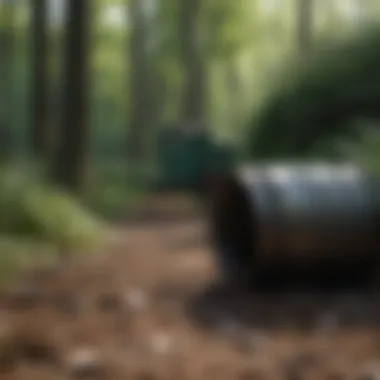
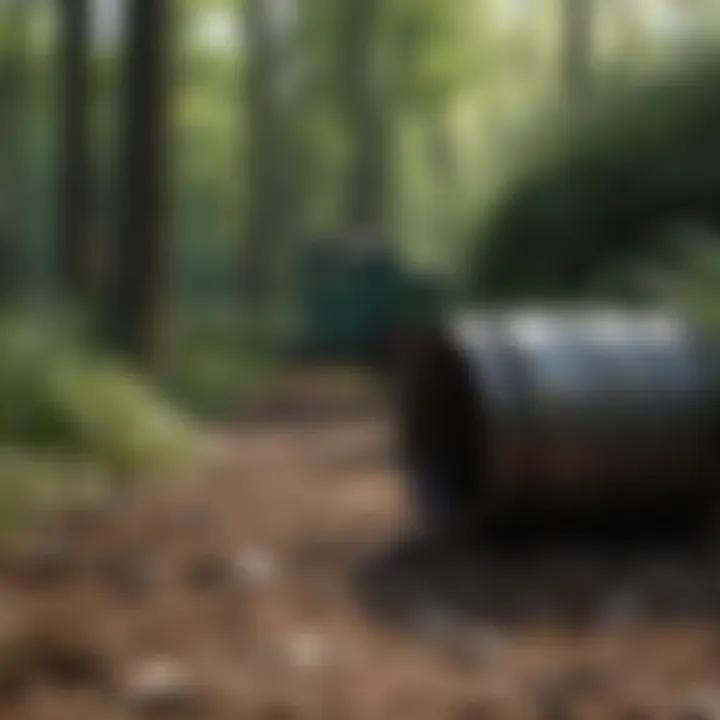
One distinct feature of linen is its ability to break down even in lower temperatures compared to many other fabrics. This quality makes it a reliable choice for gardeners who want to add such textiles to their compost systems. Like cotton, the origin of linen plays a significant role in its compostability, so opting for organically produced linen is preferred.
Hair and Fur
Hair and fur from pets and humans are often overlooked as compost materials. Both materials are biodegradable and can provide nitrogen to the compost pile, benefiting the overall process. However, hair may take longer to decompose than plant materials. Moreover, there is a consideration of potential chemical exposure if the hair or fur comes from treated animals. Nonetheless, they still represent a valuable addition to composting efforts.
Materials to Avoid in Composting
Understanding what materials should be excluded from composting is essential for maintaining a healthy compost system. Certain items can introduce pathogens, attract pests, and inhibit the composting process. This knowledge not only protects the integrity of your compost but also contributes positively to environmental practices. Identifying and eliminating these materials ensures that the compost remains effective, safe, and beneficial for soil enhancement.
Meat and Dairy Products
Meat and dairy products are often tempting to add to compost because they are organic. However, they pose significant risks. These items can attract rodents and other pests, which can disturb the compost bin and create nuisance problems. Furthermore, they do not break down easily and may create odors as they decompose. The bacterial activity involved in decomposing meat can also lead to health risks, making it essential to keep these items out of the compost.
Oils and Fats
Oils and fats belong to a category best avoided in compost systems. These substances can disrupt the microbial balance necessary for decomposition. When added, they tend to form a greasy layer around compost materials, hindering air circulation. This lack of aeration can slow down the composting process. In addition, oils may attract unwanted wildlife and introduce pathogens into the compost mix, resulting in a less effective end product.
Diseased Plants
Including diseased plants in your compost contributes to a significant composting dilemma. The pathogens responsible for diseases can survive the composting process, potentially spreading to healthy plants when the compost is used. Even if the compost reaches the correct temperature, some pathogens can endure. Excluding any plants with diseases is paramount for preserving plant health in your garden, making this consideration crucial.
Synthetic Materials
Synthetic materials, such as plastics, are entirely incompatible with compost. They do not decompose like organic waste, leading to pollution and environmental harm. Even bioplastics that claim to be compostable may not break down effectively in home composting systems. Keeping these materials out of your compost ensures that the resulting product is pure and suitable for enriching soil without introducing harmful substances.
"Understanding what to avoid in composting is as vital as knowing what to include."
By being mindful of these materials, you create a better composting environment. Thus, ensuring your compost serves its purpose effectively. Ensuring you avoid these specific items boosts the quality of your compost, benefiting both your gardening efforts and environmental health.
Setting Up a Composting System
Setting up a composting system is essential for anyone interested in sustainable practices. A well-designed system can greatly enhance the composting process. It helps in efficiently breaking down organic materials and creating nutrient-rich compost for gardens or plants. The initial setup is not just about availability but also about the effectiveness of the compost generated. Here, we will discuss various aspects of establishing a successful composting system.
Selecting a Compost Bin
Selecting a suitable compost bin is one of the first steps in creating an effective composting system. Different types of compost bins are available in the market, and the choice may depend on space, ease of use, and materials available for composting.
Types of Compost Bins
There are several types of compost bins to choose from, including:
- Tumbler Bins: These bins allow for easy mixing of compost through rotation.
- Stationary Mixing Bins: These require manual mixing but can hold a larger amount of waste.
- Worm Bins: Ideal for small spaces, these use worms to break down organic matter.
The key characteristic of these bins is their ability to manage space efficiently. Tumbler bins are popular choices, especially for urban dwellers. They typically have a compact design and keep the composting process tidy. However, they can be more expensive than other options.
DIY Options
For those who prefer a cost-effective solution, DIY composting bins can be constructed using simple materials such as wooden pallets or plastic containers. The DIY option allows for creativity and customization according to specific needs. DIY bins are highly accessible and can be tailored to fit any space.
However, they require careful planning to ensure proper aeration and moisture levels. Still, the satisfaction of creating your own compost bin can be rewarding and motivating for novice and experienced composters alike.
Choosing a Location
Location is another critical factor in setting up your composting system. The right site can impact the speed and efficiency of composting. Both sun exposure and easy access play vital roles in maintaining your compost.
Sunlight Requirements
The bin needs to be placed in an area that receives adequate sunlight. Sunlight helps in increasing the temperature of the compost, promoting faster decomposition. A bin in direct sunlight is often more effective during the cold months, encouraging microbial activity.
However, too much sun can dry out the compost, making it essential to monitor moisture levels. Adjusting the location for optimal sunlight exposure can lead to a balanced composting process.
Accessibility
Accessibility should also be a top consideration. A compost bin should be easy to reach for adding materials and turning the compost. Poor access can often lead to neglect, resulting in ineffective composting. Choosing a location close to your kitchen or garden can motivate regular maintenance of the compost pile.
An ideal location is one that is convenient to maintain yet far enough to avoid unpleasant odors in your living area.
Layering Techniques
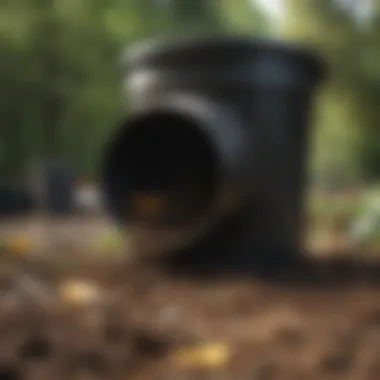
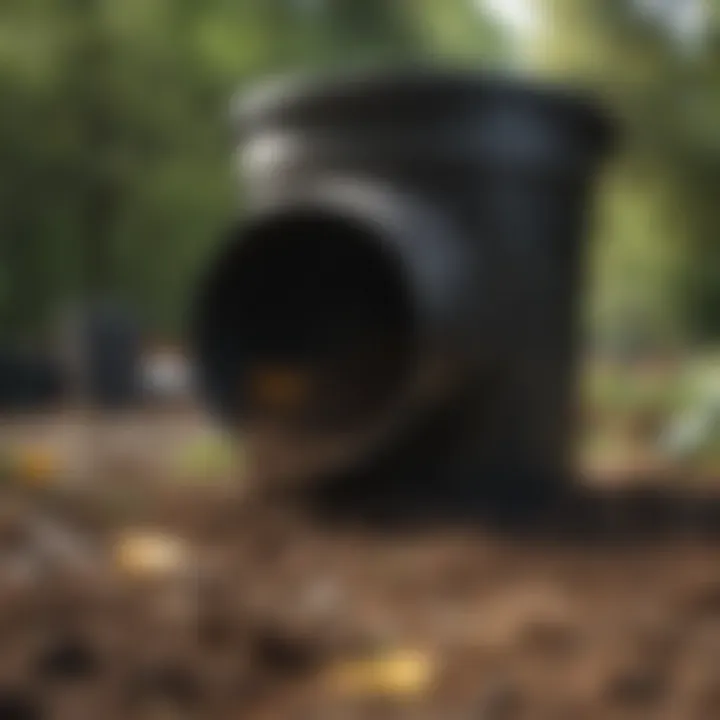
Layering techniques play a vital role in maintaining the right balance of materials in your compost. Properly layering materials can enhance decomposition and overall compost quality.
Carbon to Nitrogen Ratio
Understanding the carbon to nitrogen ratio is essential for successful composting. A balanced ratio of browns (carbon sources) and greens (nitrogen sources) is crucial for effective composting. Ideally, a ratio of 30:1 is most effective for composting.
Maintaining this ratio facilitates optimal microbial activity, ensuring that organic matter decomposes at a healthy rate. Too much nitrogen can create a foul smell, whereas too much carbon can lead to slow decomposition.
Achieving the Right Texture
Achieving the right texture in compost is equally important. A good compost mix should feel moist but not soggy. Proper texture allows air to circulate and promotes aerobic decomposition.
Mixing coarse and fine materials can aid in achieving this balance. For instance, small bits of kitchen waste can be layered with larger yard waste. Keeping a variety of textures will make it easier for microorganisms to work effectively.
"Maintaining the right balance of carbon, nitrogen, and texture significantly influences the quality of your compost."
Best Practices for Effective Composting
Effective composting requires a dedicated approach. Just throwing organic materials into a pile and hoping for the best will not yield the best results. The goal is to create nutrient-rich compost that can improve soil health and support plant growth. Therefore, understanding best practices is crucial. This ensures an efficient composting process and minimizes odors and pests. Furthermore, following proper techniques can speed up decomposition. Here we will focus on three key practices: moisture control, aeration techniques, and monitoring composting progress.
Moisture Control
Moisture is an essential element in the composting process. The ideal moisture level for compost is around 40-60%. Too much moisture can lead to anaerobic conditions, resulting in foul odors. Conversely, insufficient moisture may hinder microbial activity, slowing down decomposition.
Here are some recommendations for managing moisture:
- Check moisture regularly: Use your hand to feel the compost. It should feel like a damp sponge, not wet.
- Balance dry and wet materials: Layer your compost with dry materials like leaves and wet materials such as kitchen scraps.
- Utilize covers: If you're composting outdoors, consider using a tarp in rainy conditions to prevent excess water accumulation.
Proper moisture control is vital for creating a healthy compost environment, which directly translates to effective nutrient breakdown.
Aeration Techniques
Aeration is another critical component of excellent composting practices. This process involves allowing air to circulate within the compost pile. Aerobic bacteria thrive in oxygen-rich conditions, breaking down organic matter efficiently. Without adequate aeration, compost may become compacted and anaerobic, leading to slow decomposition and odors.
Consider these aeration strategies:
- Turn your compost: Regularly turning or mixing the pile introduces air and helps maintain an even temperature.
- Keep it loose: Avoid compacting materials. A loose structure promotes airflow.
- Add bulking agents: Materials like straw or small branches create spaces for air circulation.
Implementing good aeration techniques greatly enhances the microbial activity in the compost, accelerating the decomposition process.
Monitoring Composting Progress
Finally, monitoring your compost pile ensures that it is healthy and progressing as expected. Keeping track can help identify any issues and allow for timely interventions. Changes in temperature, color, or signs of odor can indicate whether a pile is doing well or needs adjustments.
To effectively monitor your compost, consider the following:
- Temperature checks: Ideal composting temperatures range from 130°F to 160°F. Higher temperatures indicate active decomposition.
- Visual inspection: Look for a crumbly texture and dark color, signifying that compost is maturing.
- Smell test: A pleasant earthy smell indicates healthy compost, while strong foul odors often signal decay and improper conditions.
"Monitoring the composting process not only ensures success but also provides insightful data about the transformation occurring in your pile."
The Environmental Impact of Composting
The environmental impact of composting is significant and complex. Understanding this impact is crucial for anyone invested in sustainable waste management practices. Composting serves as a viable solution to various environmental challenges, particularly those arising from our current waste management systems.
One of the primary benefits of composting is its ability to reduce landfill waste. Landfills continue to expand, posing ecological and social challenges. When organic waste decomposes in landfills, it generates methane, a potent greenhouse gas that contributes to global warming. Composting, in contrast, allows organic material to decompose aerobically, significantly reducing harmful emissions. By diverting kitchen scraps, yard waste, and other compostable items from landfills, we can directly reduce the waste that contributes to these issues.
Moreover, composting plays a vital role in promoting soil health. Healthy soil is essential for sustainable agriculture and ecosystem stability. The rich, nutrient-dense compost produced through this process enhances soil fertility. It improves the soil structure, retains moisture, and fosters beneficial microorganisms. The increased organic matter in compost also helps in carbon sequestration, which is critical for mitigating climate change by capturing atmospheric carbon dioxide.
"Composting is more than recycling; it nurtures the earth and contributes to cleaner air and healthier ecosystems."
Ending
In this article, the discussion centered around the various aspects of composting and what types of waste can be effectively composted. The conclusion serves as a critical component by emphasizing the main takeaways and the relevance of composting in today's world. Composting is not just a method of waste disposal; it is an essential practice that promotes sustainability.
Summary of Key Points
Several important points deserve emphasis. First, composting can significantly reduce the amount of organic waste that ends up in landfills, thus lowering greenhouse gas emissions. Second, compost adds nutrients back into the soil, benefiting plants and the ecosystem. The types of materials suitable for composting range from common kitchen scraps like vegetable peels and coffee grounds, to less-known items such as natural fabrics and biodegradable plastics. Additionally, avoiding certain materials, such as meat and dairy, is crucial to maintain an effective compost pile. Understanding composting basics contributes to better environmental stewardship.
Encouragement for Sustainable Practices
The call to action here is simple: engage in sustainable practices. By understanding what can be composted, individuals have a direct impact on their local environment. Every person has the power to contribute to soil health and reduce waste. Therefore, it is important to start composting at home, educate others about the benefits, and participate in local initiatives. Together, these actions can lead to a more sustainable future. Every small effort counts, and the journey toward environmental responsibility can begin with something as simple as composting organic waste.
"Composting not only helps reduce waste but also enriches the soil, promoting a healthier ecosystem for all."
By embracing these practices, we can nurture the planet and inspire others to follow suit.



